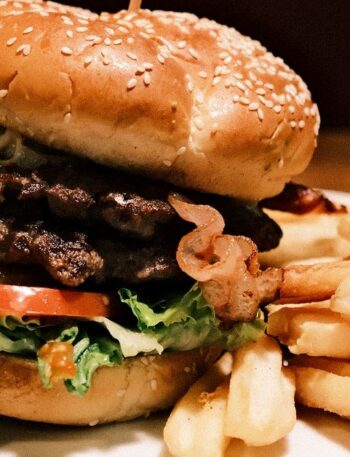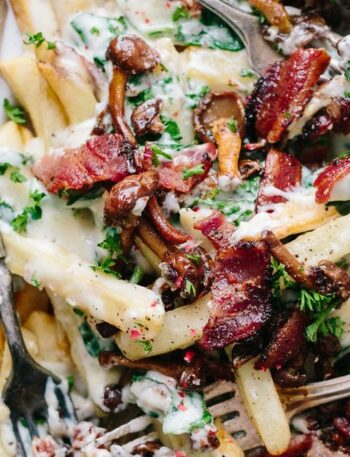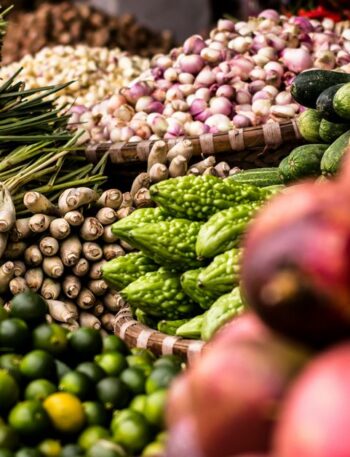Getting the Hang of Cooking Science: How Ingredients and Techniques Change Flavors
Hey there, food lovers! Ever wondered why your favorite dish tastes different when someone else makes it? Or why a simple tweak in ingredients can take a dish from ‘meh’ to ‘wowza’? Well, buckle up because we’re diving into the fascinating world of cooking science. Lets get cooking (literally) and discover how ingredients and techniques change flavors.
Whats Cooking, Good Looking?
So, picture this: you’re in the kitchen, apron on, spatula in hand. The aroma of garlic and onions sizzling in olive oil fills the air. You’re about to create something magical, but have you ever stopped to think about why those ingredients smell so good together? Lets get nerdy (in a fun way) and explore the chemistry behind cooking.
The Magic of Maillard Reaction
First up, the Maillard reaction – its like the fairy godmother of flavor. When you cook your steak or toast bread, those brown, crispy bits are the result of the Maillard reaction. Its a chemical reaction between amino acids and reducing sugars that gives browned foods their distinctive flavor. So next time you’re searing meat or baking cookies, remember: youre not just cooking; youre conducting a delicious science experiment!
Heres a quick rundown:
- Heat: You need high heat to get this reaction going.
- Amino Acids + Sugars: The building blocks that start the magic.
- Time: Patience, grasshopper! Good things come to those who wait.
Imagine that perfect burger with a juicy, flavorful crust. Thats the Maillard reaction at work. So next time someone compliments your grilling skills, just smile and say, It’s all about the Maillard, baby!
Acidity and Alkalinity: The Flavor Balancers
Ever wondered why adding a squeeze of lemon can brighten up a dish? Or why baking soda makes cookies spread out? It all comes down to pH levels – the balance of acidity and alkalinity in your ingredients.
Acidic Ingredients:
- Lemon juice
- Vinegar
- Tomatoes
These can enhance flavors and tenderize meat. (Pro tip: marinating chicken in yogurt or buttermilk can make it super tender!)
Alkaline Ingredients:
- Baking soda
- Egg whites
These can change the texture of baked goods and even help them brown faster.
So next time you’re tweaking a recipe, play around with these flavor balancers. It’s like being a mad scientist in the kitchen – but with tastier results!
Temperature: Not Just a Number
Alright, folks, lets talk temperature. It’s not just about cooking food; it’s about transforming it. The temperature at which you cook can make or break a dish.
Low and Slow:
Perfect for braises and stews. It breaks down tough connective tissues in meat, making it melt-in-your-mouth good.
High and Fast:
Great for stir-frying and searing. It locks in flavors and creates that irresistible crispy exterior.
Temperature Control:
Using a thermometer can take your cooking to the next level. (Trust me, no one wants dry turkey on Thanksgiving!)
Temperature isnt just a number; its the secret to unlocking different textures and flavors. So, dont be shy – grab that thermometer and cook like a pro.
Fat: The Flavor Carrier
Lets face it, fat gets a bad rap. But in cooking, fat is your best friend. It carries flavor and creates that luscious mouthfeel we all love.
Types of Fats:
- Butter: Adds richness and depth. Think about a buttery croissant – yum!
- Olive Oil: Great for dressings and low-heat cooking. It’s light and flavorful.
- Animal Fat: (like lard or duck fat) Adds a unique, hearty flavor to dishes.
Dont be afraid to experiment with different fats. A drizzle of truffle oil on pasta or a knob of butter in your risotto can elevate the dish from good to gourmet.
Herbs and Spices: The Flavor Boosters
Alright, spice enthusiasts, this one’s for you! Herbs and spices are like the paint on your culinary canvas. They add color, aroma, and complexity to your dishes.
Fresh Herbs:
- Basil: Sweet and fragrant, perfect for Italian dishes.
- Cilantro: Bright and citrusy, great for Mexican and Asian cuisine.
- Rosemary: Woody and aromatic, lovely with roasted meats and vegetables.
Spices:
- Cumin: Earthy and warm, a staple in Indian and Middle Eastern dishes.
- Paprika: Adds a smoky or sweet kick, depending on the type.
- Cinnamon: Not just for sweets – try it in savory dishes like chili!
Pro tip: Toasting whole spices before grinding can release their essential oils, giving your dishes an extra flavor punch. So go ahead, spice it up!
Cooking Techniques: Mastering the Methods
Now, lets talk techniques. How you cook something can be just as important as what you’re cooking. Different methods can bring out unique flavors and textures.
Sauting:
Quick and easy. Perfect for cooking vegetables and smaller cuts of meat. High heat + constant motion = deliciousness.
Roasting:
Great for vegetables and large cuts of meat. It caramelizes the natural sugars, adding depth of flavor.
Braising:
Combines searing and slow cooking. Ideal for tougher cuts of meat. The long cooking time breaks down fibers, making it tender and flavorful.
Grilling:
Imparts a smoky flavor. Perfect for summer BBQs. (And lets be real, everything tastes better grilled!)
Experimenting with different techniques can take your cooking from amateur to master chef. So grab your pots and pans, and lets get cooking!
Personal Reflections and Fun Anecdotes
Okay, time for a little story. The first time I tried making a souffl, it was a total disaster. I didnt whip the egg whites enough, and it turned into a sad, flat pancake. But hey, we learn from our mistakes, right? Now, I make a mean chocolate souffl that has friends begging for the recipe.
Cooking is all about experimenting and having fun. Dont be afraid to make mistakes; theyre just steps on the road to culinary greatness. And remember, every great chef started somewhere. Even Julia Child had her kitchen disasters!
Interactive Cooking Tips
Here are some quick tips and tricks to try in your kitchen:
- Salt: Add a pinch at a time and taste as you go. Its easier to add more than to fix an over-salted dish.
- Heat Control: Start high to sear, then lower to cook through.
- Resting Meat: Let meat rest after cooking. It helps retain juices and flavor.
- Tasting: Taste your food at different stages. Adjust seasoning as needed.
Got any favorite cooking tips or epic kitchen fails? Share them in the comments below! Were all in this tasty journey together.
Final Thoughts
So there you have it – a peek into the science of cooking. From the Maillard reaction to the magic of herbs and spices, cooking is an art and a science rolled into one delicious package.
Next time youre in the kitchen, channel your inner scientist. Experiment with flavors, play with techniques, and most importantly, have fun. Cooking is a journey, not a destination. And hey, if all else fails, theres always takeout!
Thanks for joining me on this culinary adventure. Now go forth and cook up a storm. Bon apptit!




